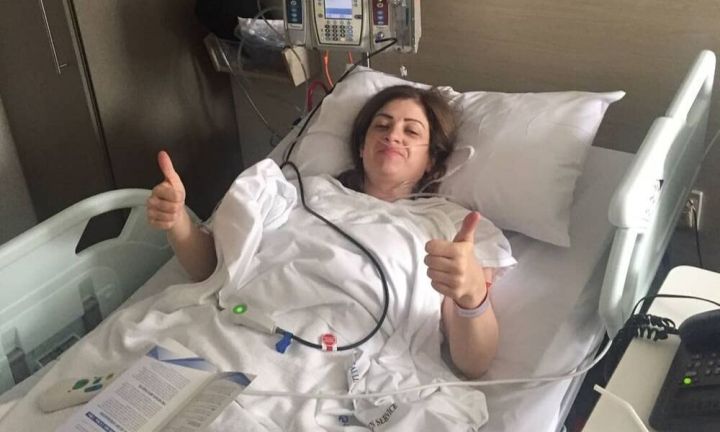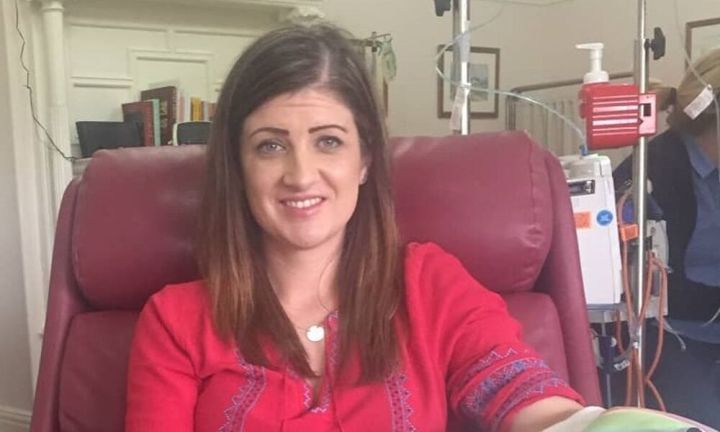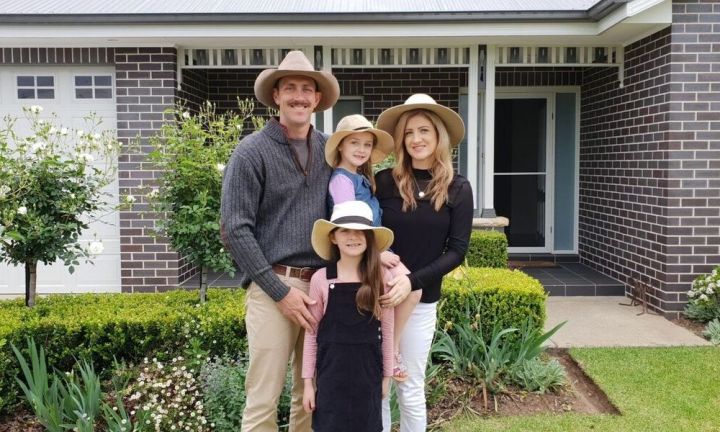When mother-of-two, Melissa Tague, 32, first noticed a lump in her groin she assumed it was just an ingrown hair. Little did she know it was actually a melanoma, which had already spread to her lymph nodes.
“It all began when I was receiving laser hair removal on my bikini line,” recalls, Melissa, now 33.
“I was checking out the area and noticed a lump in my groin. I thought it must have been an ingrown hair so I left it a couple of weeks.”
When the lump didn’t go away Melissa decided to consult her husband.
“He told me I should go to the doctor just to get it checked out.”
Melissa took her husband’s advice and visited her local GP for some tests and further investigation.

Source: Kidspot
She prepared herself for the worst
“I knew it wasn’t going to be good news,” she recalls.
“I was first told it was Hodgkin lymphoma and was referred to a haematologist who was not convinced due to my lack of symptoms, so he sent me for further and more invasive testing and that’s when he told me it was melanoma.”
Given Melissa had no family history of the disease, she says she was shocked to learn that she had melanoma in her early 30s.
“I thought melanoma was something only people with bad freckles or the elderly got. I was in complete shock,” she says.
“I was referred to an oncologist who got in contact with Professor Georgina Long at the Melanoma Institute of Australia to see if there was a clinical trial I could be accepted on. Thankfully, there was and I’ve been in the amazing hands of the Melanoma Institute ever since.”
Melissa was referred to Co-Medical Director Professor Long and given a combination of immunotherapies in a bid to stop her Stage III melanoma progressing to Stage IV.
She was among the 70 percent of trial patients who responded to the clinical trial. Melissa then went on to have two surgeries to remove the affected lymph nodes.
“I thought melanoma was a death sentence”

Source: Kidspot
“I was so lucky to have the opportunity to go on this trial which has given me hope that I will see my two girls grow up,” explains Melissa.
“I am now on a targeted drug therapy as I was fortunate enough to have a particular type of gene in the melanoma cells that can be targeted with these drugs.”
Australia has one of the highest rates of melanoma in the world, with one in 14 men and one in 24 women diagnosed before the age of 85.
It is the most common cancer in young Australians (15–39-year-olds) making up 20 percent of all their cancer cases. Yet, Melissa says there’s a misconception that melanoma doesn’t affect the younger generation.
“I want everyone to know that this disease does not discriminate,” says Melissa.
“You absolutely need to get your skin checked if you live in Australia. The UV rays here are so high and the melanoma rates are high too. Early prevention is the best cure.”
Melissa credits Professor Long for saving her life.
Raising awareness and funds for melanoma research is now her priority

Source: Kidspot
“The treatments and clinical trials are so expensive, but without them, many people would not be here today,” she says. “Raising funds for melanoma research ultimately ensures we are one step closer to finding a cure for melanoma.”
Although life has begun to return to normal again for Melissa, she still undergoes scans every three months to ensure that the cancer hasn’t returned.
“I’m doing really well now. I have to wear a compression stocking on my left leg where the lymph nodes were removed to try and prevent lymphedema. Then there are the frequent scans and the worry that occurs before that but I’m learning that this is part of my life now,” she says.
“I’m definitely more grateful for my family and friends and I really try to never take anything for granted. It sounds cliché but I’m definitely a better person from all of this. I’ve realised how strong I am and the small things don’t really bother me anymore.”
This article was first published on Kidspot and republished here with permission.